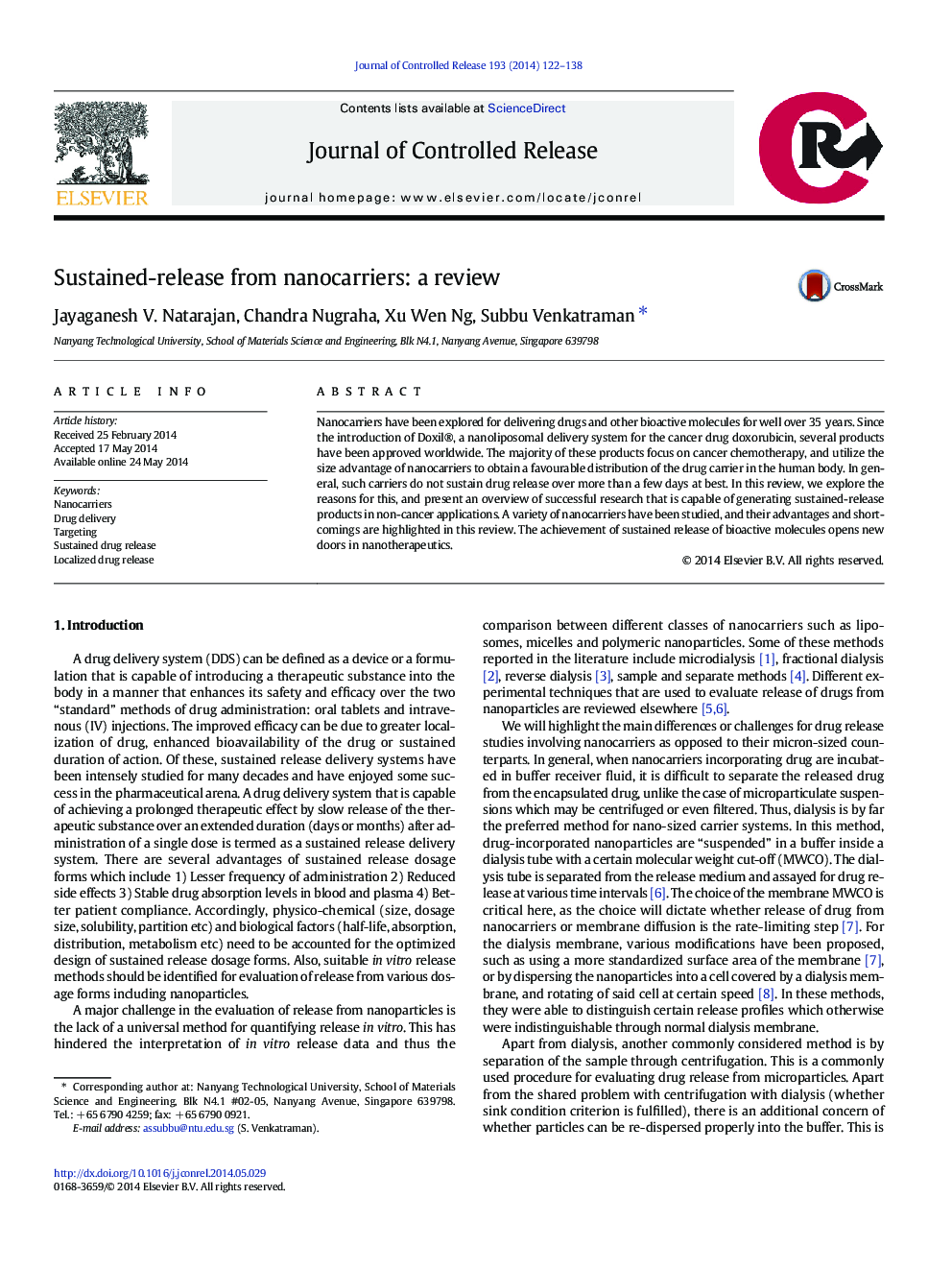| Article ID | Journal | Published Year | Pages | File Type |
|---|---|---|---|---|
| 1423888 | Journal of Controlled Release | 2014 | 17 Pages |
Nanocarriers have been explored for delivering drugs and other bioactive molecules for well over 35 years. Since the introduction of Doxil®, a nanoliposomal delivery system for the cancer drug doxorubicin, several products have been approved worldwide. The majority of these products focus on cancer chemotherapy, and utilize the size advantage of nanocarriers to obtain a favourable distribution of the drug carrier in the human body. In general, such carriers do not sustain drug release over more than a few days at best. In this review, we explore the reasons for this, and present an overview of successful research that is capable of generating sustained-release products in non-cancer applications. A variety of nanocarriers have been studied, and their advantages and shortcomings are highlighted in this review. The achievement of sustained release of bioactive molecules opens new doors in nanotherapeutics.
Graphical abstractFigure optionsDownload full-size imageDownload high-quality image (221 K)Download as PowerPoint slide
